We use cookies, including cookies from third parties, to enhance your user experience and the effectiveness of our marketing activities. These cookies are performance, analytics and advertising cookies, please see our Privacy and Cookie policy for further information. If you agree to all of our cookies select “Accept all” or select “Cookie Settings” to see which cookies we use and choose which ones you would like to accept.
How to clean your LG washing machine: 15 things you should know
February 25, 2024
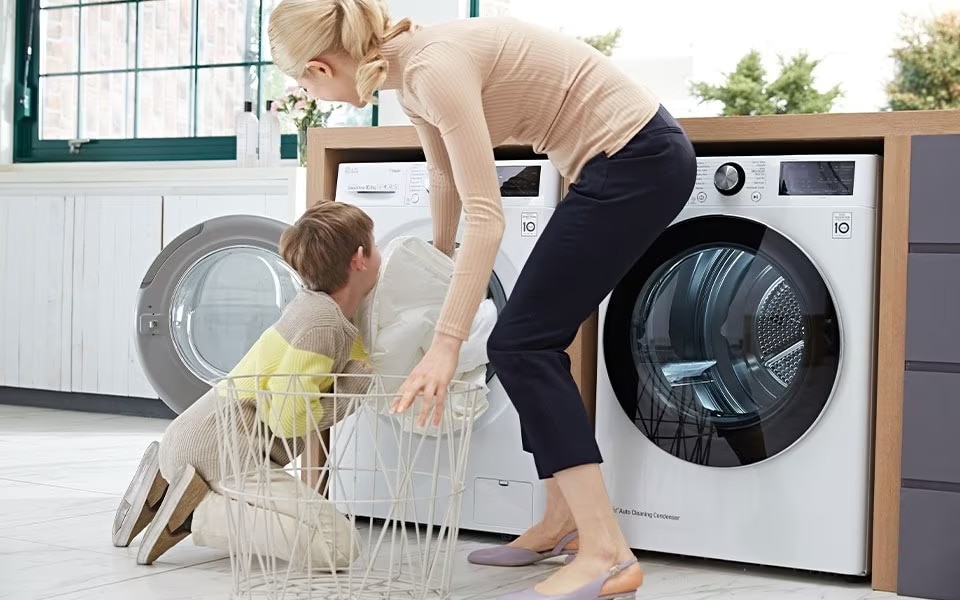
Sometimes it may feel discouraging to clean your washing machine from odors, mold and blockages. Fortunately, many Washing Machines make the cleaning process much easier for you, by applying smart technologies that help you clean your machine without any hassle. numerous LG’s Washing Machines come with a TubClean feature that allows easier cleaning. If you own an old washing machine and you’re not sure how to get rid of odors, then you're in luck because we've compiled the best hacks to help you get rid of all the unwanted dirt.
Our team at LG has put together a Washing Machine cleaning guide to give you the best tips to maintain your Washing Machine hygiene.
5 Cleaning steps for Washing Machines Front Load
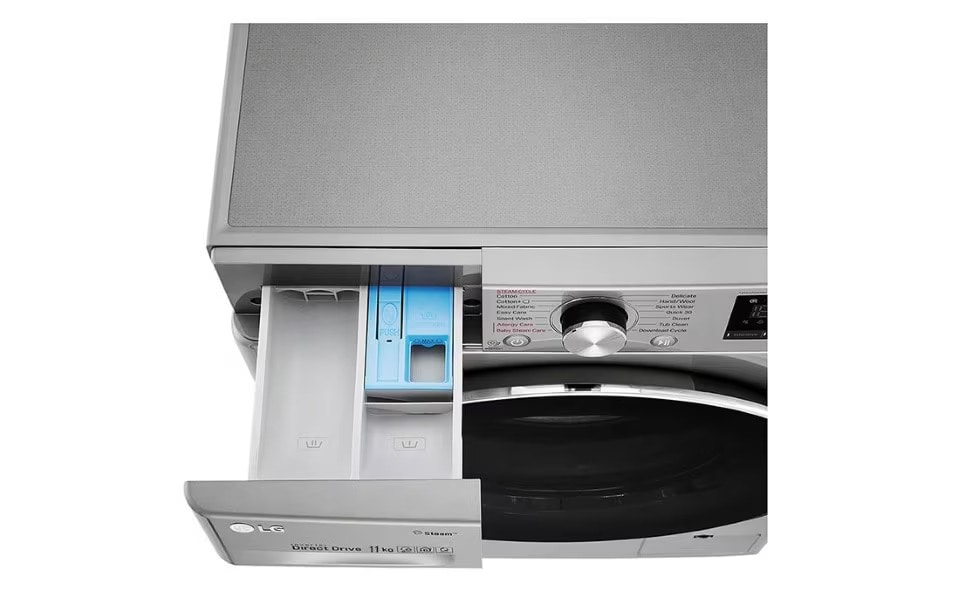
1. The Washing Machine Detergent Drawer
Firstly, to clean the detergent drawer, start by switching your machine off, then pull the drawer out as far as possible to avoid getting any resistance. Press the blue button to release the drawer fully and remove it from the machine. Soak the drawer in a bowl of hot water, you can choose to add a dishwasher liquid or vinegar for an extra level of cleanliness.
As the drawer is soaking in the hot water mix, Ensure you wipe down and clean the inside of the detergent drawer using a microfiber cloth soaked with some water and vinegar. Make sure you also get the top of the compartment where most of the mold and dirt build up. If there is any dirt stuck in crevices, use a toothbrush to remove it.
By this time your detergent drawer should have soaked long enough to release any built-up mold and soap scum, which you can now remove with a cloth or sponge. After scrubbing, rinse your drawer in warm water and make sure you dry it completely before re-inserting it into the machine.
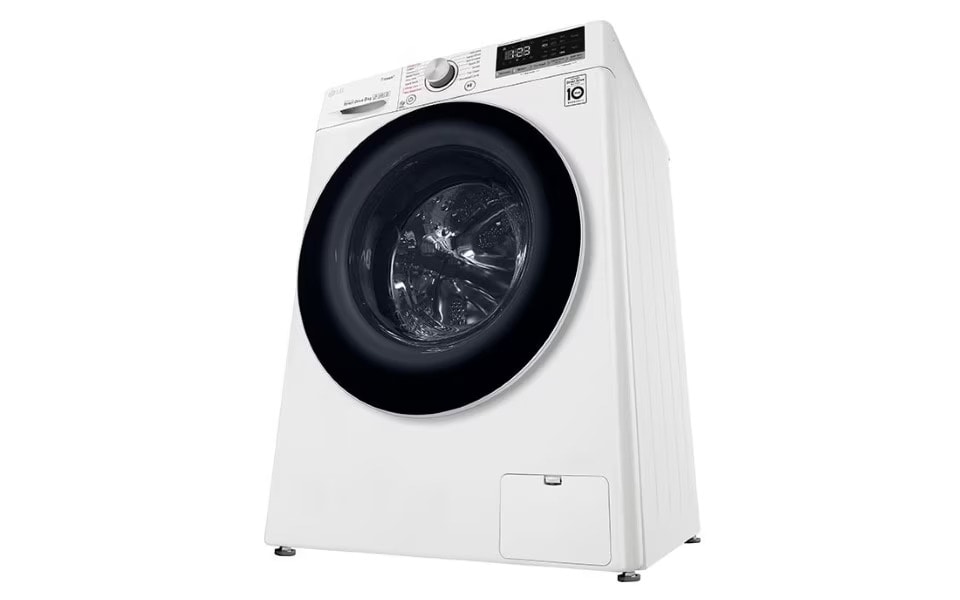
2. The Washing Machine Drain Filter
Before cleaning your Washing Machine filter check if it has a self-cleaning filter underneath the agitator, as it doesn’t need frequent cleaning as a standard filter.
Firstly, switch off your Washing Machine and remove the bottom corner cover panel on the outside of the Washing Machine, check the manual if you cannot locate the filter. To remove the filter, easily twist the cap on the outside and pull it out. If it feels like it's stuck, try to gently move it around to loosen any lint or built-up detergent.
After removing the filter that might be covered in a layer of wet liquid. Use a paper towel to remove the debris and excess liquid. Then remove the screen and soak it in a bowl of hot water for 10 minutes to soften and remove any lingering detergent, fabric conditioner, or lint that are hard to clean.
Before returning the filter into the machine, check for any loose lint inside the machine, if any, use a sponge or cloth to remove it. Make sure to screw the filter in correctly and then replace the cover to make sure it is secure.
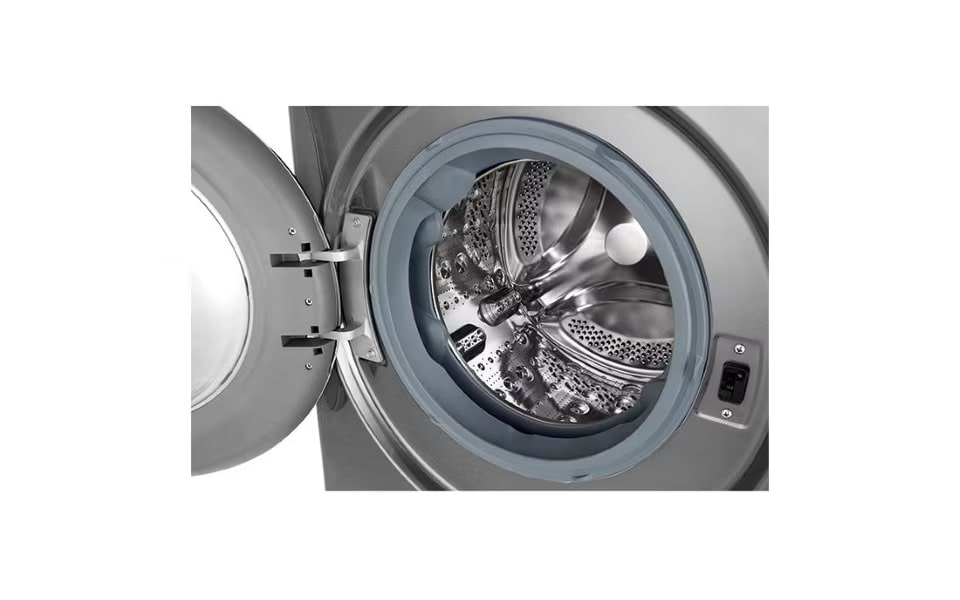
3. The Washing Machine Drum
To clean the Washing Machine Drum more efficiently, Ensure the machine is empty and switched off. Then spray the inside of the drum with white wine vinegar and wipe it with a microfiber cloth. Make sure not to do this frequently, especially near the seal of the machine as the vinegar can ruin the rubber seal.
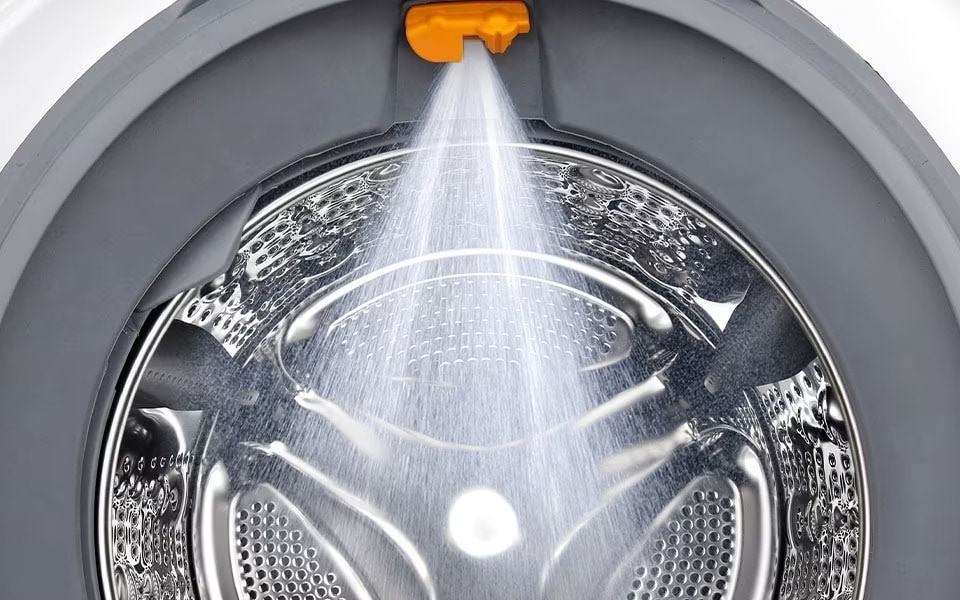
4. The Washing Machine Rubber Seal
The main reason why odors emanate from your Washing Machine is because of the seal where mold and dirt accumulate as it is the final barrier that stops water from escaping the Washing Machine, resulting in high moisture levels.
An effective way to clean your seal is to add 100g of baking soda directly into the drum and run it on an empty cycle at 90 degrees Celsius. Once the cycle is finished use a cloth soaked in warm water to remove any excess dirt under the seal.
Alternatively, you can use white vinegar on a cotton bud or bleach to clean the seal.
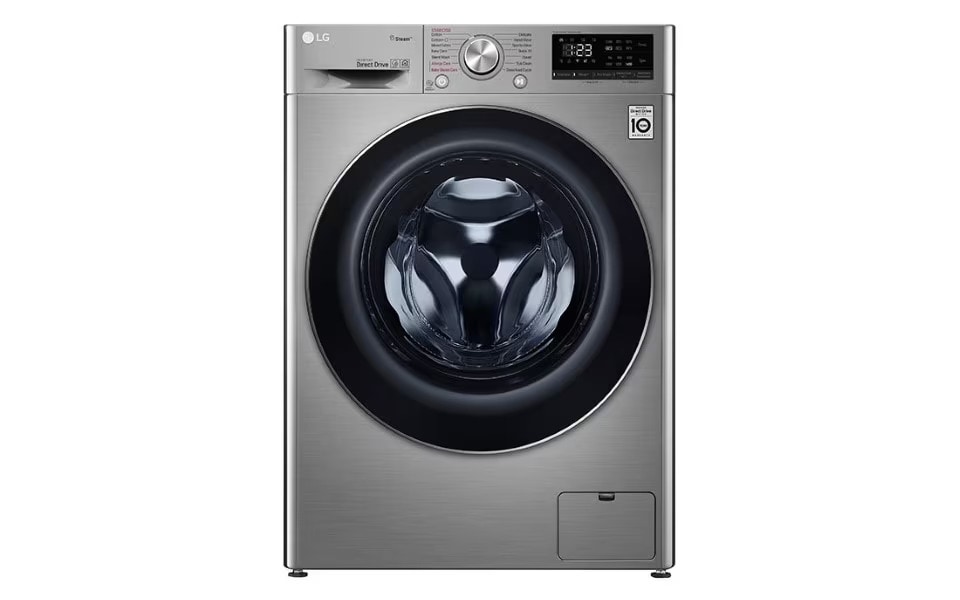
5. Front Loading Washing Machine Exterior
To keep the exterior of your Washing Machine clean you can use various products. One simple way is to use a disinfectant or white vinegar with a cloth to remove any dirt or germs.
If you have a stainless steel Washing Machine, such as LG WS1911XMT, you may want to invest in a stainless-steel spray to get the best results.
10 Essential Washing Machine Cleaning Tips
1. Consider adding white vinegar and baking soda to your list of cleaning products
Both White vinegar and baking soda are considered important in sustaining the cleanliness of your washing machine. They can be used on the dispenser, drum, and other parts of the machine. They also help in removing odors and mold.
2. Use liquid or dishwasher soap to keep on top of mold and fungus
Using soap and a wet cloth is a quick fix to removing any dirt and mold that accumulate due to excess moisture in the seal. This can save you from needing to deep clean the seal later on
3. Avoid overusing bleach in the machine
An excessive amount of bleach can damage the machine, so make sure to not overuse it when cleaning. Furthermore, if you do not empty the washing machine properly it can damage your clothes
4. Make sure to clean your machine regularly
Preferably, clean your machine at least twice a year or more regularly to prevent causing damage to your machine and keep it performing at optimal capacity.
5. Use your laundry detergent to clean your machine
You can use your normal laundry detergent on the longest cycle available if you do not have any cleaning products. Another great option is biological detergents as the active enzymes in them can break down any dirt or bacteria
6. See if you Washing Machine has a cleaning cycle setting
All our LG Washing Machines have a TubClean setting which you can use to keep your machine clean. Please check for more information on how to get the most out of TubClean.
7. Use Sodium Percarbonate to remove odors
A great alternative to remove odors from your machine is Sodium percarbonate, also known as ‘laundry bleach’ or ‘oxygen bleach’. It is stronger than baking soda and much safer than liquid bleach and it helps eliminate most of the alarming risks associated with sodium hypochlorite
8. White Vinegar or Washing Machine Tablets can eliminate limescale build up
If you live in an area that has hard water or you frequently see a limescale build up in your machine, using these anti-limescale solutions can help protect your machine for longer and your laundry from any discoloration
9. Stop smells by regularly airing out your machine
You can stop your Washing Machine from producing bad smells by airing out the dispenser drawer and the drum. This helps stop moisture build up that leads to mold and mildew which are often responsible for the bad smells coming from your machine.
10. Buy your cleaning products in bulk
To save on money and time, invest in cleaning products. This way you can get more from your money and have a long-lasting cleaning supply.
FAQs
1. Can you mix bleach and baking soda to clean Washing Machine?
There is no harm in mixing bleach and baking soda. Baking soda is considered one of the few cleaning agents that can be safely mixed with bleach. Adding bleach (in the detergent compartment) and baking soda (in the drum) creates a powerful whitening and cleaning solution for your washing machine. Remember to take safety precautions when using bleach, such as working in a well-ventilated area, wearing rubber gloves, and goggles to protect your eyes.
1. How to clean a Washing Machine with vinegar and baking soda
1. Add four cups of white vinegar to the Washing Machine and start a cycle on the highest and hottest setting – once it's filled up and barely started, pause it to let the water and vinegar sit for an hour.
2. As you wait, wipe down the lid and the rest of the Washing Machine using a cloth soaked in vinegar.
3. Clean the detergent and fabric softener dispenser using a toothbrush for more cleanness and freshness.
4. Once the first cycle has finished, add a cup of baking soda and run another powerful cycle.
5. Leave the lid open and let it air dry, you can also use a dry cloth to wipe it clean.
2. How to clean a Washing Machine with Vitamin C
Citric acid and ascorbic acid (commonly known as vitamin C) are reducing or chelating agents, which makes them effective in cleaning build-up caused by hard water, such as rust, limescale, and soap scum or detergent build-up.
Heat a pan of water until it boils, then take off the heat, and dissolve approximately 200 grams of ascorbic acid powder and 100 grams of citric acid powder in the water. Add the warm solution directly to the drum of your machine and pour a little in the tray. Run the machine on a hot wash without any clothes. Don't use citric acid undiluted on plastic Washing Machine trays as it could cause damage.
3. How to clean a Washing Machine's detergent drawer
Remove your Washing Machine detergent drawer and clean it separately in a sink. Use a bathroom cleaner of choice, with a little water on a sponge then start scrubbing the drawer. Use warm water to soften soap scum quicker. To use bicarbonate of soda to remove odors, take a tablespoon of baking soda into the drawer and spray some white vinegar. The powder will then froth up and start dribbling down the pipe – the reaction of the vinegar and bicarb will neutralize any odors and should remove any residual grime.
4. How to clean and sanitize the wash drum
Add one cup of Epsom Salts to half a cup of vinegar, or even water, then pour it directly in the drum. Run the machine on its hottest cycle, pausing at the beginning to let the solution soak. Once the cycle is over the machine should be clean and good to use.
5. How do you clean the Washing Machine rubber seal?
Add one cup of baking soda to one cup of bleach to the detergent drawer. Then add one cup of baking soda to the seal inside the Washing Machine and run on the hottest cycle. Once complete, wipe the seal with soap and a wet cloth.
6. Is bleach or vinegar better to clean Washing Machine?
The best way to clean your machine is to use both bleach and vinegar – but NEVER mix them together as they produce toxic fumes. Firstly, put the bleach in the drum, once it’s washed out, pour the vinegar in the conditioner drawer. Make sure you are using white vinegar and non-chlorinated bleach.
7. Can vinegar damage your Washing Machine?
Yes, vinegar can ruin the rubber inside your Washing Machine, which will eventually lead to leaks if used too often. Although washing your clothes with vinegar is a cost-effective and natural way to soften and deodorize fabrics, avoid using it in your washer frequently. Only use it sporadically when deep cleaning the machine.
Life's Good, LG!







